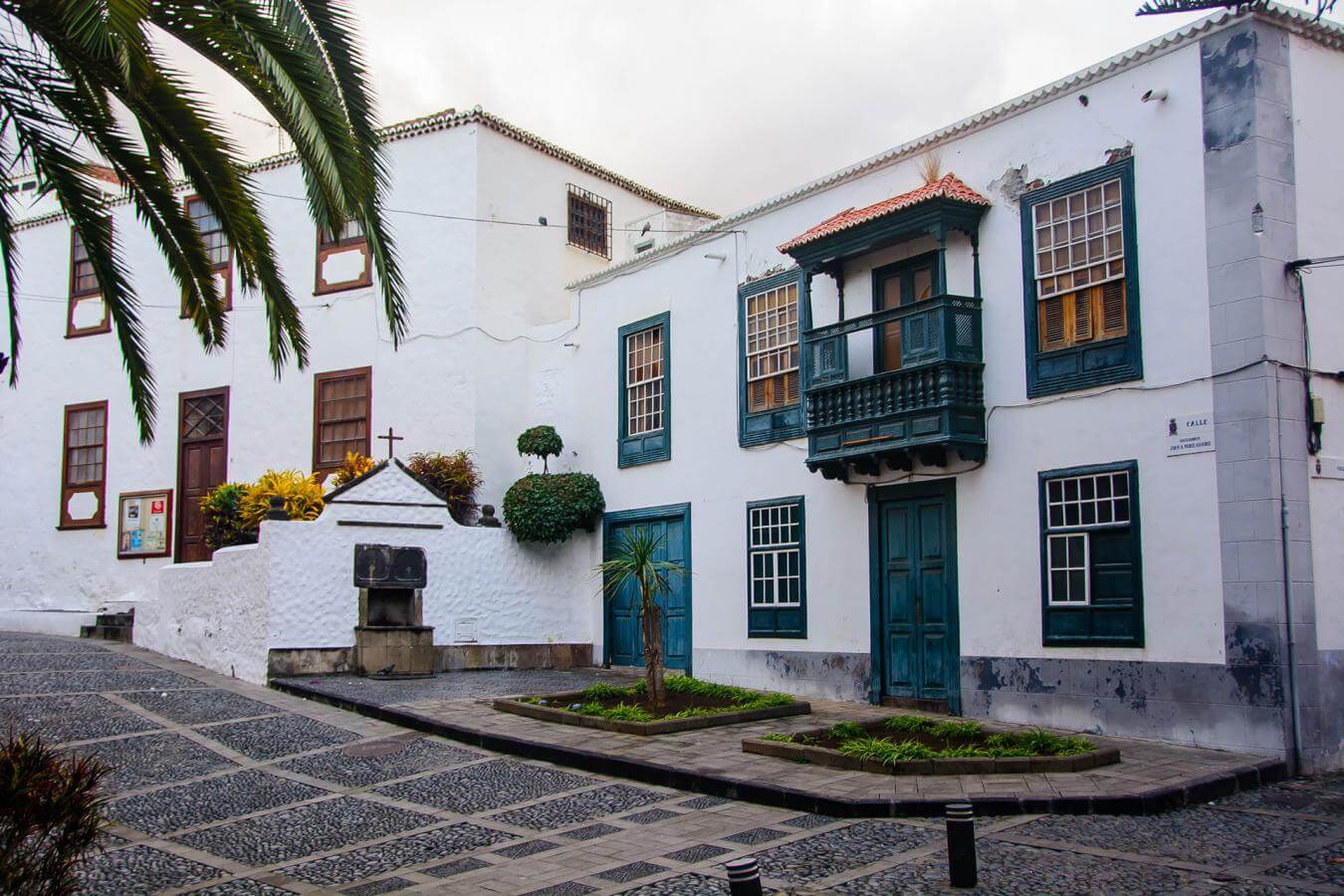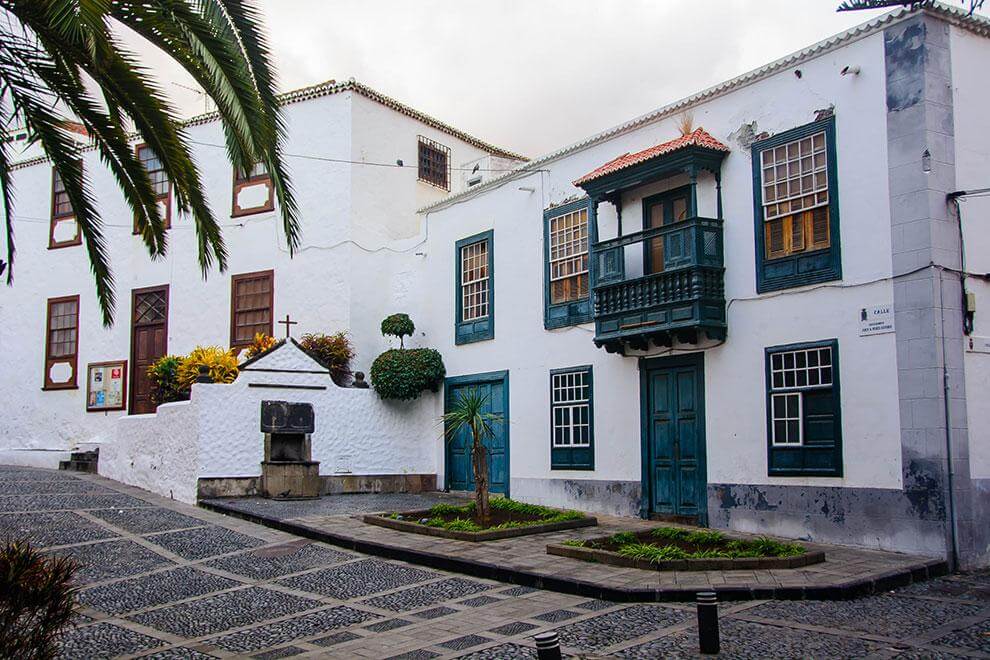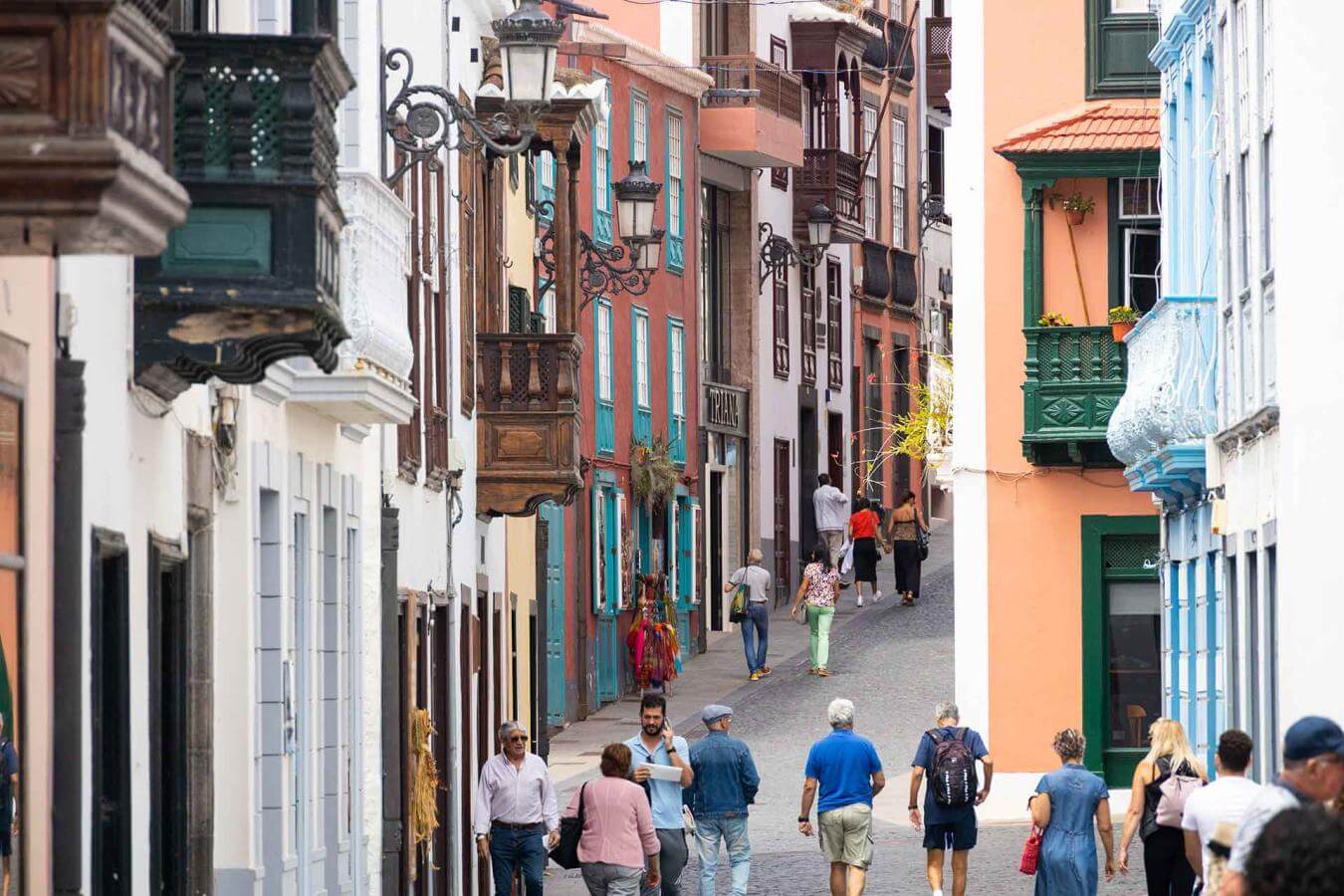Located in the east of the island, the capital of La Palma is a charming seafaring city that offers visitors a multitude of cultural and historical options, as well as countless streets, squares and alleys in which to enjoy a coffee or its interesting crafts.
A Capital with a History
Declared an Asset of Cultural Interest with the category of Historic Site, Santa Cruz de La Palma is located to the east of the island and was founded on 3 May 1493 by the Adelantado Alonso Fernández de Lugo. Over the years, it also became an important commercial port that brought prosperity and wealth to its inhabitants, giving rise to numerous buildings and monuments.
Nowadays, walking through the cobbled streets of this capital is a journey back in time thanks to the jewels hidden in every corner, among which is its famous Plaza de España, considered, by experts, as the best Renaissance complex in the archipelago. From this square rises the Calle Real, the nerve center of the city, which also houses good examples of religious architecture such as the Church of the Savior, the Church of Santo Domingo (with important pieces of Flemish art) or the Church of San Francisco. The visitor will enjoy touring squares such as San Sebastian, San Francisco or Borrero, or getting lost in the traditional neighborhoods of La Canela or San Telmo.
Near the sea, the visitor will also find the colorful balconies of the Avenida Marítima, which fill the walk with joy. The Barco de La Virgen, located next to the Plaza de la Alameda, will surprise visitors both for its imposing presence and for the secrets locked inside. It is a replica of the skull of Columbus, and has an interesting naval museum inside
Nearby is the complex of square, church and convent of San Francisco, as well as the insular Museum inside and its interesting collection of fine arts.
Do not forget to approach the castle of Santa Catalina, which represents the iron defense of the island against the pirate attacks it suffered. Finally, the cannons have recently been restored in the Castle of La Virgen de las Nieves, resounding every five years on the occasion of the Bajada de la Virgen.







Traditions
For those looking for original and well-preserved traditions there is nothing like visiting the Los Indianos Carnival and its talcum powder.
Considered one of the most popular festivities in the entire archipelago, this carnival originated in the 60s, when a group of families on the island decided to parody the so-called Indianos, emigrants who returned from Latin America loaded with gold, jewelry and servants in the eighteenth, nineteenth and twentieth centuries.
Celebrated on Carnival Monday, this festivity brings together, in the streets of the capital, thousands of palm trees that, dressed in white period suits and armed with talcum powder, enjoy a feast full of music and joy.
Also the la Bajada de la Virgen de las Nieves is one of the most deeply rooted celebrations on the island. Every five years this tradition full of music and celebrations takes place in the island capital, especially during the first two weeks of July. The transfer of the image of the Virgin of Las Nieves, hoisted on the shoulders of the Palmerians, takes place from her sanctuary, on the mountain, to the city, located on the coast. The origins of this festival date back to the seventeenth century as a response of the parishioners to the Virgin of Las Nieves, so that she could intercede in the different misfortunes that took place on the island of La Palma. One of the most anticipated events during this celebration is the traditional Dance of the Dwarves, named a Festival of National Tourist Interest. At this party, men and women are transformed into dwarves in a spectacular setting. There is also the long-awaited Dance of the Minuet, inspired by the dances of the French court of the seventeenth and eighteenth centuries. In these festivities there are other events worth admiring such as The Allegorical Chariot, The Acrobats, The Giants and Cabezudos or the Dialogue Between the Ship and the Castle, all of them before the virgin goes back up to her temple on 5 August, marking the end of the festivities.
Fun on the Beach or in the Mountains
For lovers of water sports, the beach of Santa Cruz de la Palma is an ideal place to relax while practicing windsurfing, kitesurfing or windfoil.
Located along the entire avenue of Santa Cruz de La Palma, it is a point of disconnection for palm trees and visitors who come to enjoy the sea breeze.
Officially inaugurated in April 2017, this artificial beach of black volcanic sand takes the place of what was the historic beach of Caleta del Varadero. Its recent remodeling made it possible to reopen this beach to the Atlantic Ocean, something that had been lost with the construction of the promenade in 1949. The beach has a rental service for umbrellas, showers or toilets.
If what is preferred is the mountain, the Pico de la Nieve, at 2,239 meters in altitude, is a challenge for the walker, who is rewarded by the impressive panorama it offers of the Island.




























